Timing of intestinal bacteria to the inside of the mucosa
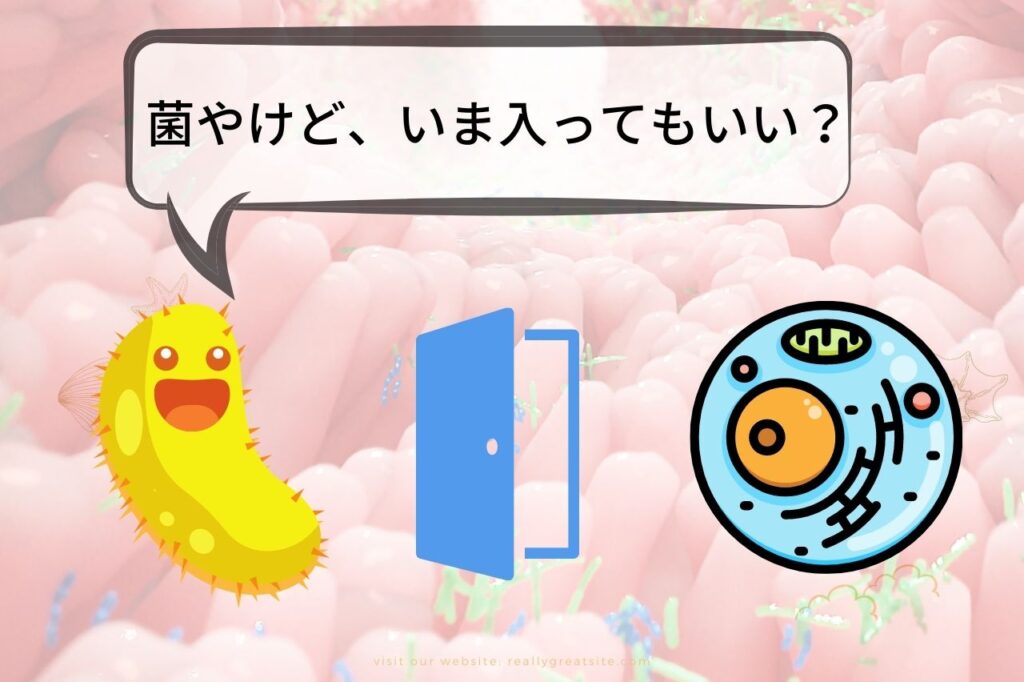
Conventional wisdom that intestinal bacteria are only found in the outer mucus layer
The intestine is a hose-like cavity that serves as a pathway for bacteria, food, and water.
The inside of the hose is not suddenly the cells of the large intestine; mucus and a mucosal layer separate the outside from the inside.
Within the mucus layer, there is also an outer mucus layer that allows bacteria to move in and out relatively freely, and an inner mucus layer that is more viscous.
Basically, the conventional wisdom is that in a healthy gut, bacteria can only enter the outer mucus layer.
If the mucus layer is thinned or destroyed for any reason, the bacteria can push their way into the vicinity of the colon cells.
This can result in inflammation of the intestinal cells or, in the worst case, bacteremia, in which the bacteria enter the bloodstream.
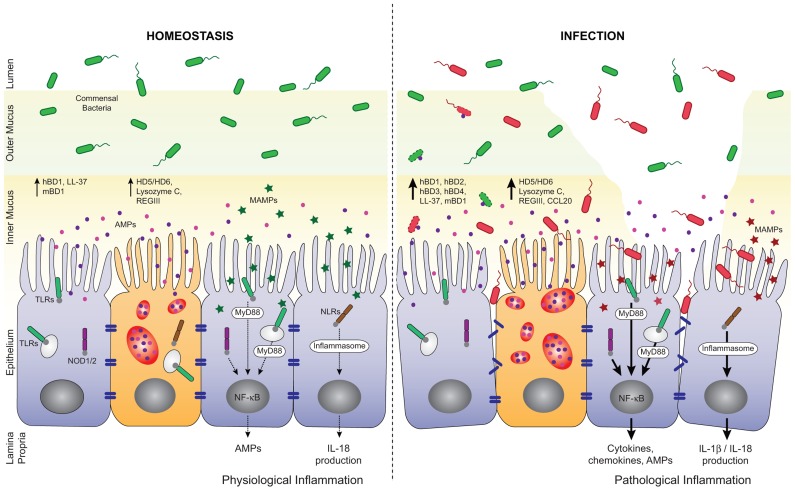
Other interesting research results have been published by a research team at Osaka University. ((Okumura, R., et al. “Lypd8 promotes the segregation of flagellated microbiota and colonic epithelia,” Nature, vol. 532, no. 7597, 2016, pp. 117-121, doi:10.1038/nature17406. Lypd8 separates flagellated bacteria from colonic epithelia : Life Sciences New article review))

In mice lacking the gene Lypd8, the bacteria were able to invade the inner mucus layer.
It is never healthy for bacteria to pass through the inner mucus layer, the mucosa, and enter the cells of the colon.
With this perception, there is also a bit of misunderstanding.
When bacteria enter the inner mucus layer and submucosa
In fact, the healthy state of the body is also the timing for the bacteria to enter the inner mucus layer and submucosa.
ACTIVE TRANSPORT VIA M CELLS
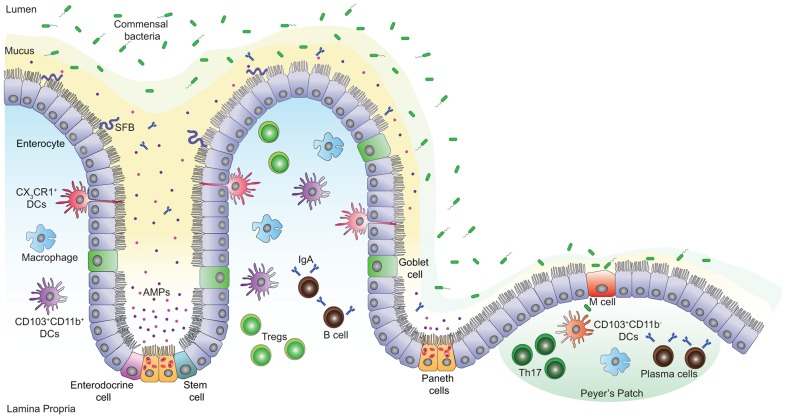
The intestine has many “villi” instead of straight walls.
These grow to increase the surface area of the intestine. There are many types of colon cells that make up the villi.
LET’S LOOK AT THE RED GLOWING M CELLS.
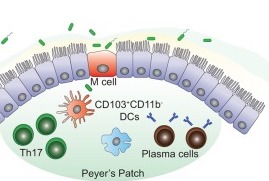
M cells are like a gateway for bacteria to enter the colon tissue.
But like gatekeepers, they do not play much of a role in turning away bad guys.
The bacteria (antigens) are delivered to immune cells called dendritic cells.
The mechanism of this switch is not yet clear, but TLRs (toll-like receptors), short-chain fatty acids produced by the bacteria, and the exchange of enzymes between the bacteria and humans are thought to be key factors.
Incidentally, butyrate, a short-chain fatty acid, is also responsible for stimulating mucus production.
They create their own environment so that they can keep their distance from colon cells.
Cytokines in T cells, passive transport by IgA in B cells
Dendritic cells that hear the information from M cells determine whether the organism is an enemy or not and activate T and B cells. ( (Biology of M cells, specialized intestinal epithelial cells) )
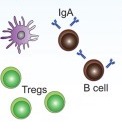
There is a pathogen!” then Th17 cells release proinflammatory cytokines and killer T cells are mobilized to eliminate the bacteria.
On the other hand, if it is determined that “We want these bacteria to remain in the intestine! Treg and IgA antibodies are produced to ensure that the bacteria remain in the intestine.
Transport of bacteria by the intestinal crypts and goblet cells?
Bacteria also have two types of entrances into the colon tissue: those that are easy to enter and those that are not.
Here is an image of another paper by a research team at Osaka University. [3] ((Area Fusion Review, 5, e007 (2016) DOI: 10.7875/leading.author.5.e007
Ryu Okumura & Kiyoshi Takeda: Crosstalk between intestinal epithelial cells and commensal bacteria.))
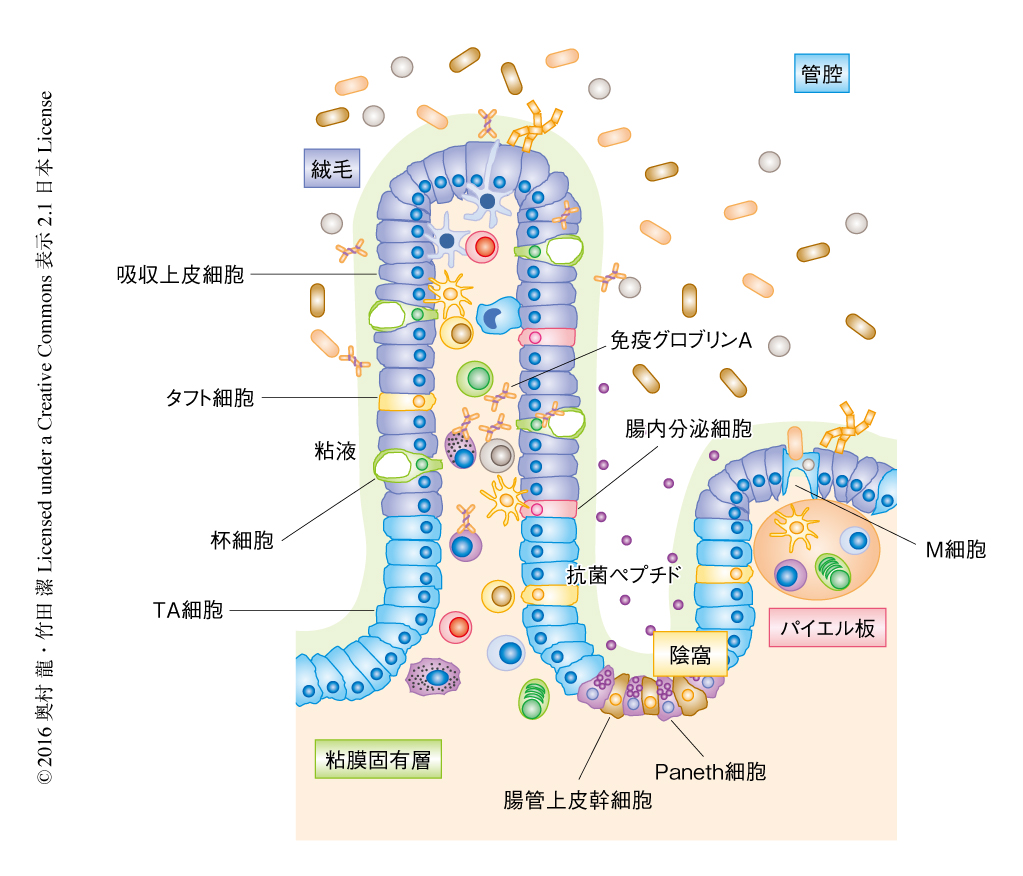
Ryu Okumura & Kiyoshi Takeda: Crosstalk between intestinal epithelial cells and commensal bacteria. (cited from)
This concave area is the crypt.
In fact, it is packed and thick with mucus. In addition, the Paneth cells, which bacteria don’t like, produce antibacterial peptides, making it a difficult environment for bacteria to enter.
Therefore, it has long been believed that there are no bacteria in this “cryptic fossa.
But it is now known that certain bacteria live in large numbers in this crypt. [4] ((Pédron, Thierry, et al. “A Crypt-Specific Core Microbiota Resides in the Mouse Colon.” mBio, vol. 3, no. 3, 2012.)) 3, no. 3, 2012.))
The crypts are difficult to enter, but once there, they are protected by mucus. In addition, cells called germ cells provide a meal (mucus rich in mucopolysaccharides). This changes the environment to one that is more hospitable for bacteria.
This area may also take in bacteria.
Bacterial transport by NanoGAS®︎.
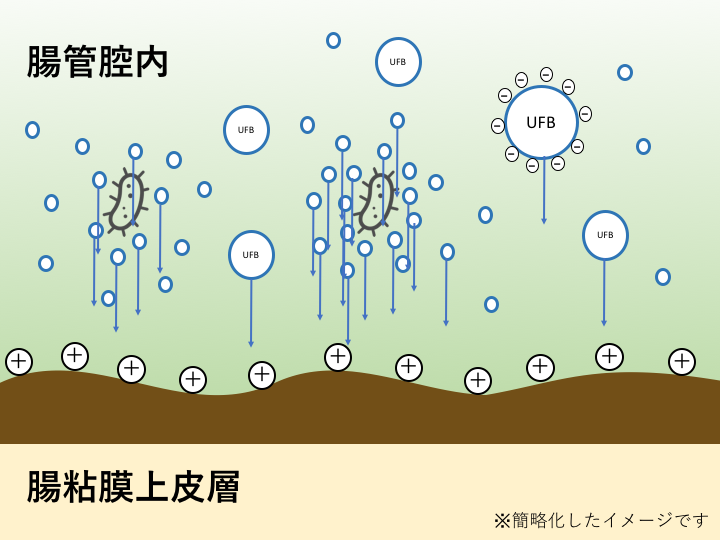
Finally, the original contents of Symbiosis Inc. (Reference :《Patent Pending》Transplantation bacteria solution using NanoGAS®︎ water)
Various effective methods of intestinal flora transplantation have been tried, but our transplanted bacteria solution uses nanobubbles called NNanoGAS®︎ as the solvent.
The purpose of this solution is to help the establishment of intestinal bacteria of other people’s origin, compared to the use of ordinary saline as a solvent.
THE M-CELL, THE DOOR THAT THE BACTERIA MUST KNOCK ON TO DETERMINE IF THEY ARE ALLOWED TO REMAIN IN THE INTESTINE, IS A NARROW GATE. FIRST, NANOBUBBLES HELP THE TRANSPLANTED BACTERIA TO REACH THIS DOOR SMOOTHLY.
It is related to the bioactivity potential among bacteria and the unique ultra-fine bubble (UFB) potential of NanoGAS®︎. However, the mechanism is still in the verification stage.
The mechanism is a mixture of biochemistry, biology, physical engineering, and theoretical physics.
その他の Blog に関する記事
Articles about other Blog
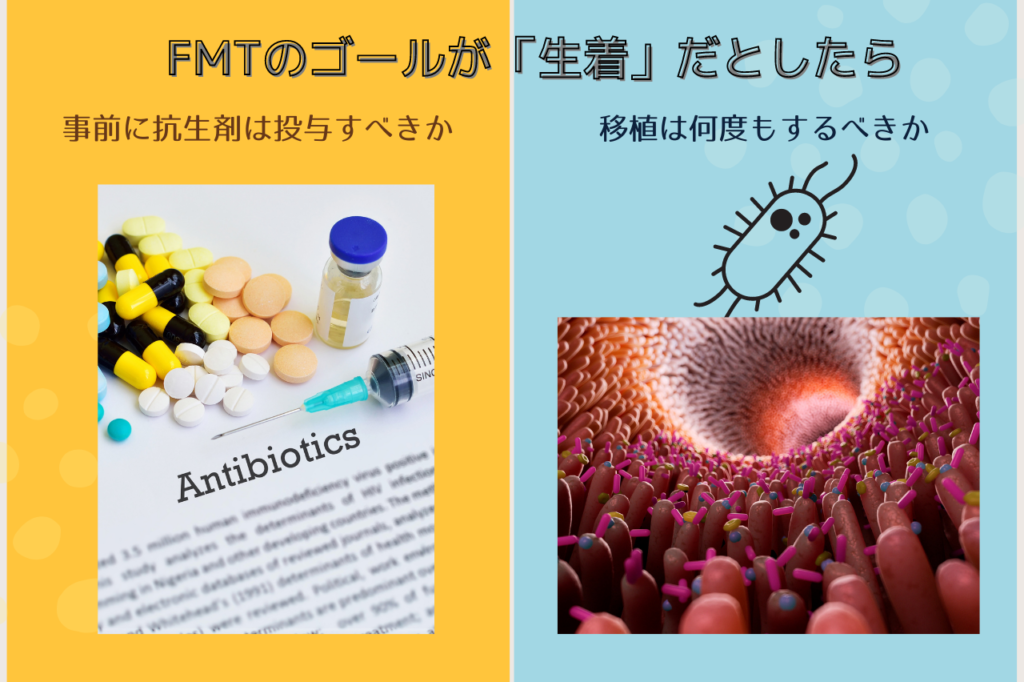
October 26, 2021
WHAT IS THE GOAL OF FMT? IMPACT OF NUMBER OF TRANSPLANTS AND PRIOR ANTIBIOTIC ADMINISTRATION ON BACTERIAL VIABILITY
Effect of Number of Transplants and Prior Antibiotic Administration on Bacterial Engraftment Original Microorganisms | Free Full-Text | Engraftment of Bacteria after Fecal Microbiota Tra […].
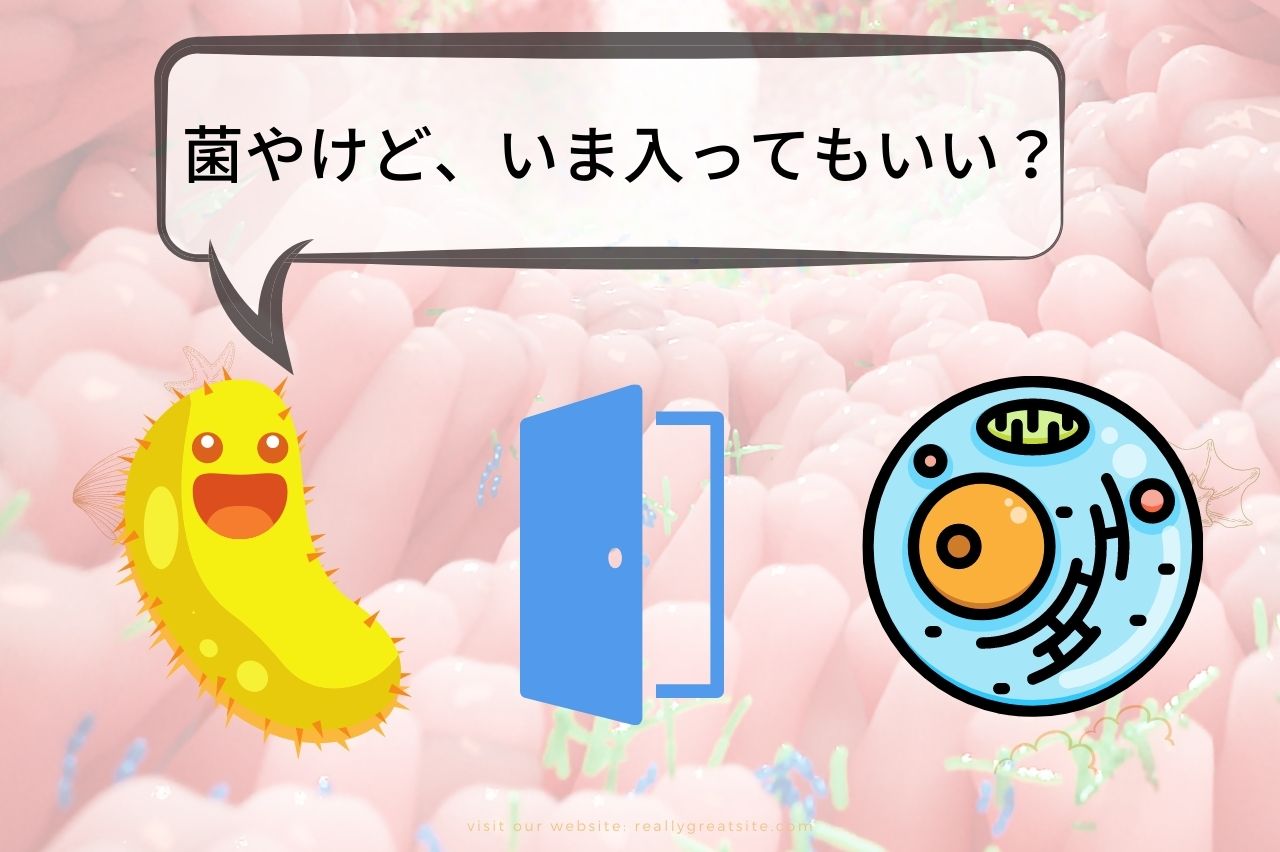
August 03, 2021
Timing of intestinal bacteria to the inside of the mucosa
Conventional wisdom is that intestinal bacteria are only found in the outer mucus layer. The intestine is a hose-like cavity that serves as a pathway for bacteria, food, and water. The inside of the hose is not suddenly the cells of the large intestine, but the mucus and mucous layer separates the outside from the inside. The mucus layer […].
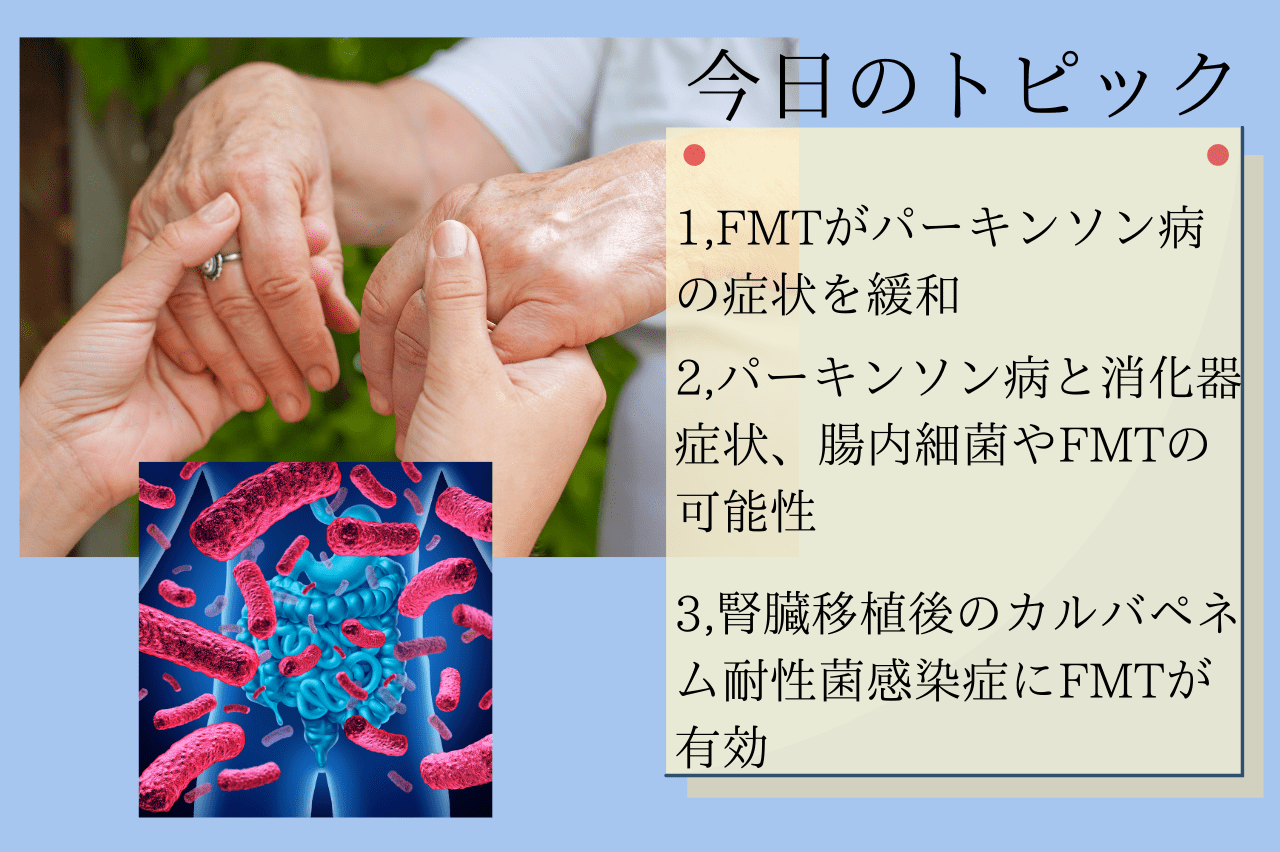
May 31, 2021
FMT IS EFFECTIVE AGAINST PARKINSON’S DISEASE AND RESISTANT BACTERIA [2021.5.31].
FMT relieves symptoms of Parkinson’s disease (Original) Evaluation of fecal microbiota transplantation in Parkinson’s disease patients wit […].




